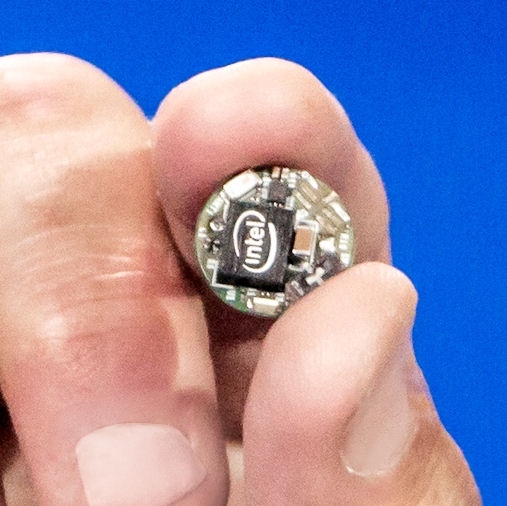Intel makes its wearables move
The US chip giant unveiled its Curie wearable module at CES 2015, based on its Quark SoC and intended for the nascent wearables market. However, with a bunch of ARM-based wearables already launched at the show, Intel is once more playing catch-up in mobile.
January 7, 2015

The US chip giant unveiled its Curie wearable module at CES 2015, based on its Quark SoC and intended for the nascent wearables market. However, with a bunch of ARM-based wearables already launched at the show, Intel is once more playing catch-up in mobile.
“The rise of new personal computing experiences, intelligent and connected devices, and the wearable revolution are redefining the relationship between consumers and technology,” said Brian Krzanich, Intel CEO. “Our goal with Intel technology is to help solve real problems and enable experiences that are truly desired by people and businesses.”
In a bid to kick-start its wearables efforts Intel also announced partnerships with a bunch of companies that make wearable things, such as Oakley, Basis Peak (which it owns) and Fossil. Intel apparently has a strategic collaboration with Oakley that will yield “an intelligent product…designed to enhance athletes’ performance,” later this year.
As well a 32-bit Quark microcontroller the button-sized Curie module contains 384kB of flash storage, 80kB of SRAM, a low-power DSP sensor, Bluetooth LE, accelerometer and gyroscope. It’s expected to be avaialbe in the second half of this year. “With the Intel Curie module, Intel will continue to push the envelope of what’s possible and enable companies to quickly and effectively build low-power wearables in various form factors,” said Mike Bell, vice president and general manager of Intel’s New Devices Group.
Incidentally Krzanich also used his CES keynote to stress his company’s PC credentials. Having been unwittingly sucked into the ‘GamerGate’ affair last year, which at times was associated with misogyny in the gaming industry, Intel was forced to offer a public apology. At CES Intel announced plans to invest $300 million “to help build a pipeline of female and under-represented engineers and computer scientists; to actively support hiring and retaining more women and under-represented minorities; and to fund programs to support more positive representation within the technology and gaming industries.”
About the Author(s)
You May Also Like








.png?width=300&auto=webp&quality=80&disable=upscale)


_1.jpg?width=300&auto=webp&quality=80&disable=upscale)


.png?width=800&auto=webp&quality=80&disable=upscale)